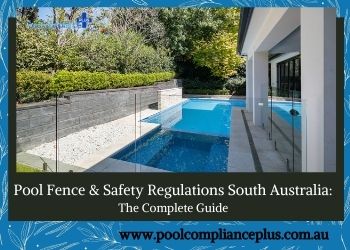In response to an increase in drownings, pool fencing standards have evolved tremendously. Knowing your state’s pool fence laws before you start designing will not only increase protection, but it will also make your outdoor space more practical and visually appealing.
Begin with The Fencing Around Your Pool
So, you have decided to build a pool in your backyard? When picturing a pool, one of the first things that comes to mind for most homeowners is the size and venue. However, a swimming pool, is never full without a pool fence, and although they are often considered an eyesore, they are required under current pool safety regulations in South Australia.
The Basics of Pool Fence Regulations
Pool fence laws differ from one state to another and are revised and updated on a regular basis to ensure complete water safety. All the pools in Victoria, NSW, South Australia, Tasmania, Western Australia, and the ACT must comply with this new Australian standard AS1926-2012
The following are some common basic requirements for swimming pool fencing, regardless of the state it is in:
- The top of the pool fence must be a minimum of 900mm away from climbable objects such as trees, pergolas, barbecues, toys, pot plants, and furniture
- Any gaps in the fencing must be less than 100mm
- The pool fence must be constructed from durable materials
- Gates must be self-closing and swing away from the pool
- Gate latches must be mounted on the pool fence
If you have any doubts, your licenced contractor or pool fence installer will check all of your state’s pool fence regulations in South Australia.
All the Common Requirements of Pool Safety Standards
While the new pool rules are intended to avoid drownings by ensuring a protected atmosphere for all swimmers, there are still hazards around every body of water regardless of the pool barrier. The following recommendations by SPASA are intended to help pool owners ensure there is healthy use of their swimming pool and spa at all times.
- Check to see if your pool fence complies with your state’s pool fence regulations in South Australia
- Do keep in mind that a pool fence isn’t a replacement for adult supervision
- Regardless of their swimming abilities, never leave a child alone near water
- Consider enrolling your child in swimming lessons
- Take a CPR course to learn how to respond in an emergency
- Instructions for resuscitation should be posted near your pool, such as on your pool fence
- If your pool is too shallow for swimming, post a sign that says “no diving” Don’t leave furniture or other climbable objects near your pool
- Drinking alcohol near water or while supervising children is not a good idea



